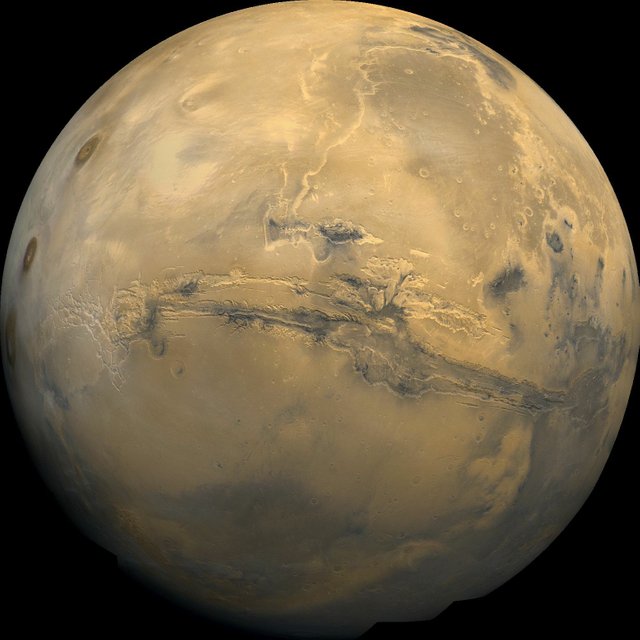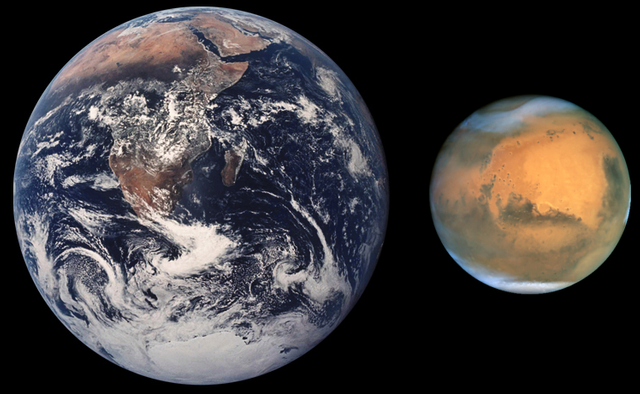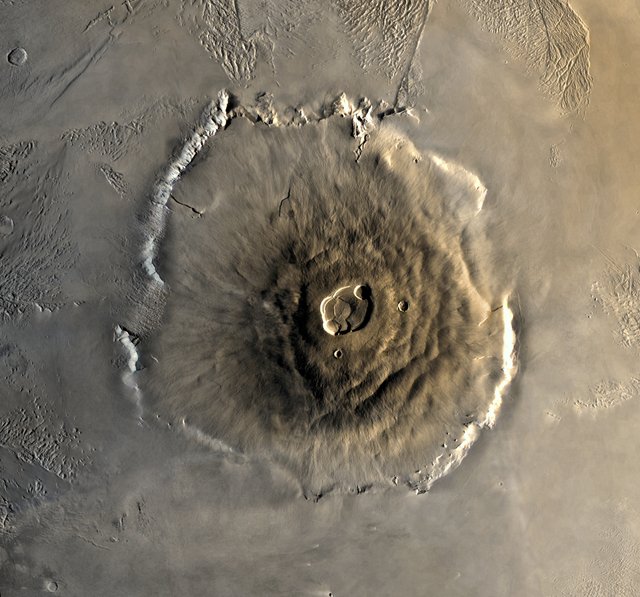
A photo of Mars taken by the Viking 1 probe
Mars is the fourth, according to the distance of the planet from the Sun. The ancient Romans called her the name of her god of war. The sky clearly stands out with its rust-colored color, which is why it is often called the Red Planet.
Mars in the solar system
Mars revolves around its very axis similar to Earth: the turnover period is 24.6 hours (Mars day is only 37 minutes longer than Earth's day).
In the vicinity of Mars, two moons discovered by Asaf Hall were discovered in 1877.
Mars is smaller than Earth

The atmosphere of Mars consists mainly of carbon dioxide (95%) and nitrogen (2.7%), argon (1.6%), oxygen (0.15%) and trace amounts of carbon monoxide, water vapor, neon, krypton and xenon . Relatively high temperature differences on the surface of Mars are caused by the wind, whose speed reaches 300 km / h
On the surface of Mars is Olympus Mons - the highest mountain discovered by us in the Solar System. Mount Everest hides near it because it rises 21 kilometers up. It is not really an ordinary mountain. Olympus Mons is a volcano 550 km wide at its base. At its peak, climbers could admire a crater measuring 85 km-60 km and a depth of 3 km. However, we should not be afraid of eruptions while climbing. According to data collected by the Mars Global Surveyor, the volcano last erupted some 10-20 million years ago.
Olympus Mons

SOURCES: